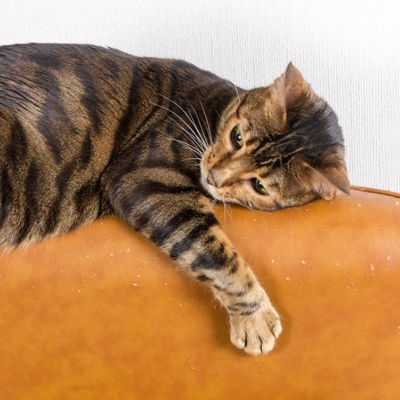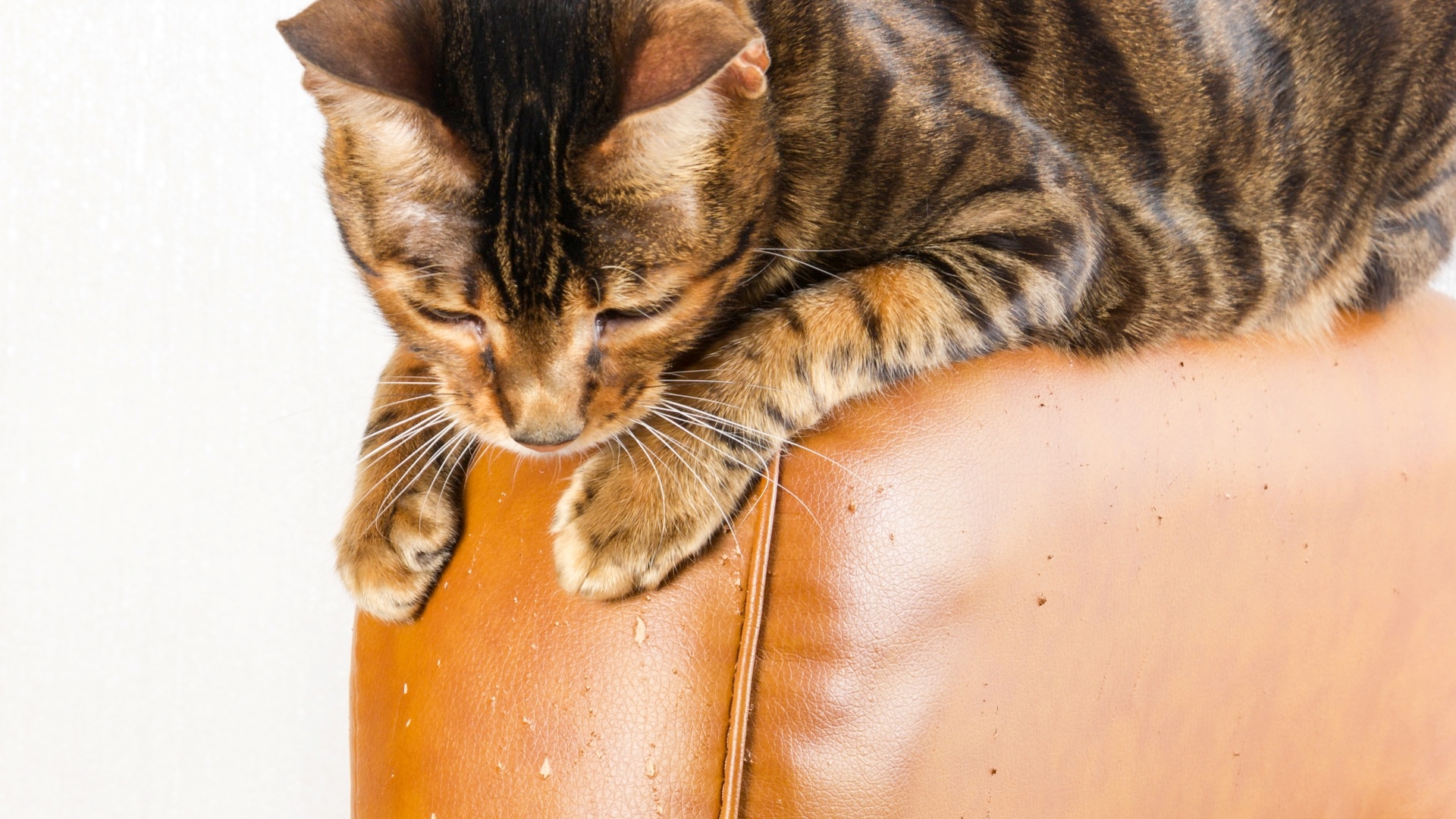Does Your Cat Scratch The Furniture?
Summary:
You have chosen to include a wonderful friend and companion in your family, a cat. Now, you must accept that a cat has an innate need to use its claws to scratch. Cats will scratch for three reasons. In this article we will cover these reasons, as well as some possible solutions.


You have chosen to include a wonderful friend and companion in your family, a cat. Now, you must accept that a cat has an innate need to use its claws to scratch.
A cat will scratch for three reasons:
- It will scratch to hone or sharpen its claws, for these have always been its chief offensive and defensive weapons.
- It will scratch to stretch and tone its muscles.
- It will scratch to mark its territory.
You cannot eliminate the need a cat has for scratching. But you can teach a cat to scratch in an appropriate place. Scratching posts are suitable for this as are scratching materials hung from doorknobs, attached to walls, or lying flat on the floor. Posts are usually carpeted or wrapped with sisal rope. Flat scratching pads can be carpeted or covered with burlap or upholstery material. Some people have had success by bringing an alderwood log into the house!
Training sometimes requires more than one post. A scratching post should be placed close to where your cat usually sleeps, eats, or waits to go outside. Upon awakening or after eating, a cat usually puts its front paws on something above its head, then extends its claws and pulls like crazy. A scratching post should also be sturdy enough to not fall over when your cat pulls on it.
Carefully select the material on a scratching post. The fabric should not be a kind that makes it difficult for your cat to extract its claws.
Teaching your cat to use a scratching post or hanging scratching material can be accomplished in several ways. First of all, praise your cat every time you see its using its scratching post. A happy "Good Kitty!" followed by a favorite food treat will reinforce this behavior. Drag a catnip mouse, or a piece of paper tied to a string, across the floor and let her "crawl" up the scratching post.
Purchase a carpeted kitty condo where your cat can sleep, wake up, stretch, and SCRATCH. If she is scratching in an inappropriate place, gently lift her up, place her next to the scratching post, and praise her if she uses it. Try sprinkling some catnip on the scratching post. This will have more effect on adult cats.
Most of all, do not punish your kitty for scratching the furniture by hitting, scolding or chasing her. Your cat will not understand the fuss over doing what comes naturally. Punishment will only build stress and create a fearful cat who may socially withdraw or become aggressive toward you. The best thing is to have several places where the kitty may scratch, especially close to sleeping areas and doors. Taping foil or plastic over the already inappropriately scratched area will discourage further scratching. Also, taping a tightly blown-up balloon on the scratched furniture will negatively reinforce this as a scratching area if, by chance, she pops the balloon. You may want to use one of the new electronic devices, which emits a high-pitched alarm whenever the kitty approaches an off-limits scratching place.


